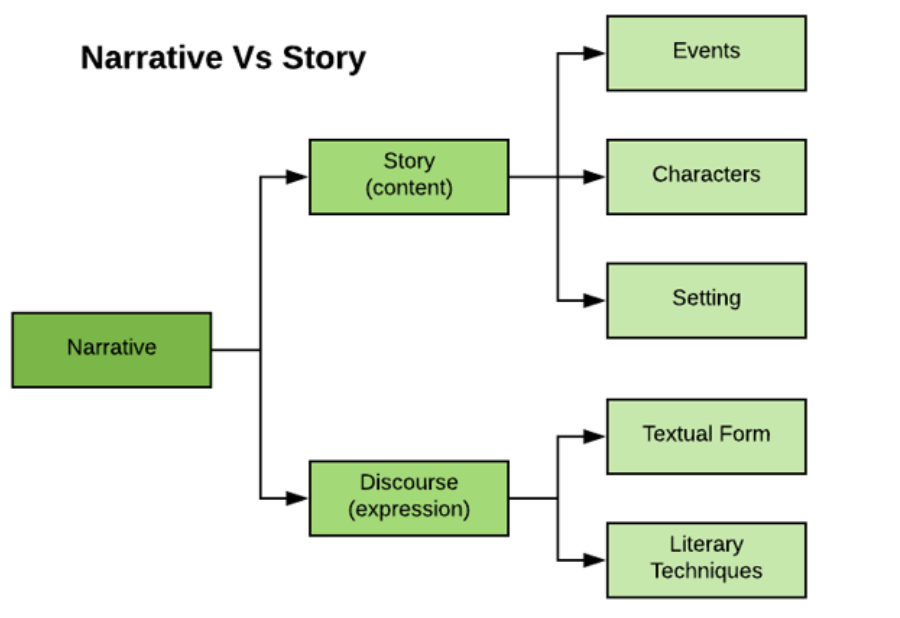The Romance Plot intro
1/14
There's no tags or description
Looks like no tags are added yet.
Name | Mastery | Learn | Test | Matching | Spaced |
|---|
No study sessions yet.
15 Terms
Focus:
How earlier texts have seen reimagined, recontextualised, or appropriated contemporary contexts, both affirming or challenging the concerns of the earlier text.
Narrative vs. Story
The conventions of the romance require that the heroine be courted, and the dynamic of the plot comes from the way in which the barriers to expressing her response to the hero – scheming relatives, class constraints, opposing political forces, the social prescriptions of race and caste – are progressively removed by fate, destiny or other forces over which the heroine has no control, so that the final ecstatic union with the beloved may occur.
The shaping romantic myth is, of course, a Western creation; it is a source of puzzlement to members of non-Western societies, in which marriage operates to link family, property and political or religious groups, or else as a prudential institution guaranteeing personal service and the care of one generation for another.
What is important about the Western romantic heroine is that she has no agency, or power to act on her own behalf. Things happen to her - adventures, lovers, reversals of fortune … Jill Ker Conway

Things to look out for
Values and attitudes
Context (social and historical)
Language + form
Purpose
What is context
Social/cultural norms
Historical context (What period of time this was in? Where were they?)
Pride and Prejudice: Regency Era (early 19th century England countryside)
Crazy Rich Asians (Late 2010s Singapore)
Political context
Technological/scientific advancements
Personal (author’s) context
What are values
Personal (author’s) values
Values based on historical context
Gendered values
Class values
What is the relationship between context and values?
Historical context → shapes values
Definition: Cultural context
Cultural context is related to the society where individuals are raised in and at how the culture affects behaviour. It incorporates values that are learned and attitudes that are shared among groups of people. It includes beliefs, meanings, customs, ideas, language, norms.
Definition: Values
Values relate to judgments about what is important in life and how this translates into principles, moral codes or standards of behaviour.
Textual form
Satire
Novel of manners
3rd person limited narration
Free indirect discourse and authorial intrusion
Free indirect discourse: author speaks on behalf of the characters, author is tell us what happens inside the minds of the characters
Language and form: Satire
Irony
Sarcasm
Parody (mock imitation)
Caricatures
Hyperbole
Example:
Bingley sisters
Lady Catherine de Bourgh
Mr Collins’s
Language and form: Free indirect discourse/authorial intrusion
Narrator shapes our views of characters thoughts + motivations
Language and form: character foils
Opposing characters differ in personality traits
Novel of manners
Textual form explores the daily lives of particular social groups, customs, ideals, etc
What conventions of the Romance genre have been utilised so far?
The love rival to the main female protagonist: Caroline Bingley
Enemies to lovers
Mirrors (Jane and Mr. Bingley, Elizabeth and Mr. Darcy)
Parallel plot of Jane and Bingley
Character foil of Elizabeth (more independent and feminist), Charlotte (more practical and realistic)
What societal values are explored? How do these values act as a barrier to love in the novel?
The need for young women to marry asap (Mrs. Bennet and Charlotte Lucas)
The naivety of young boy-crazy girls (Kitty and Lydia) (Jane Austen mocks this)
The pompousness of inherited money and how out of touch the gentry is (Mr Collins & the Bingley sisters)
The division between the upper gentry and the country (lower) gentry